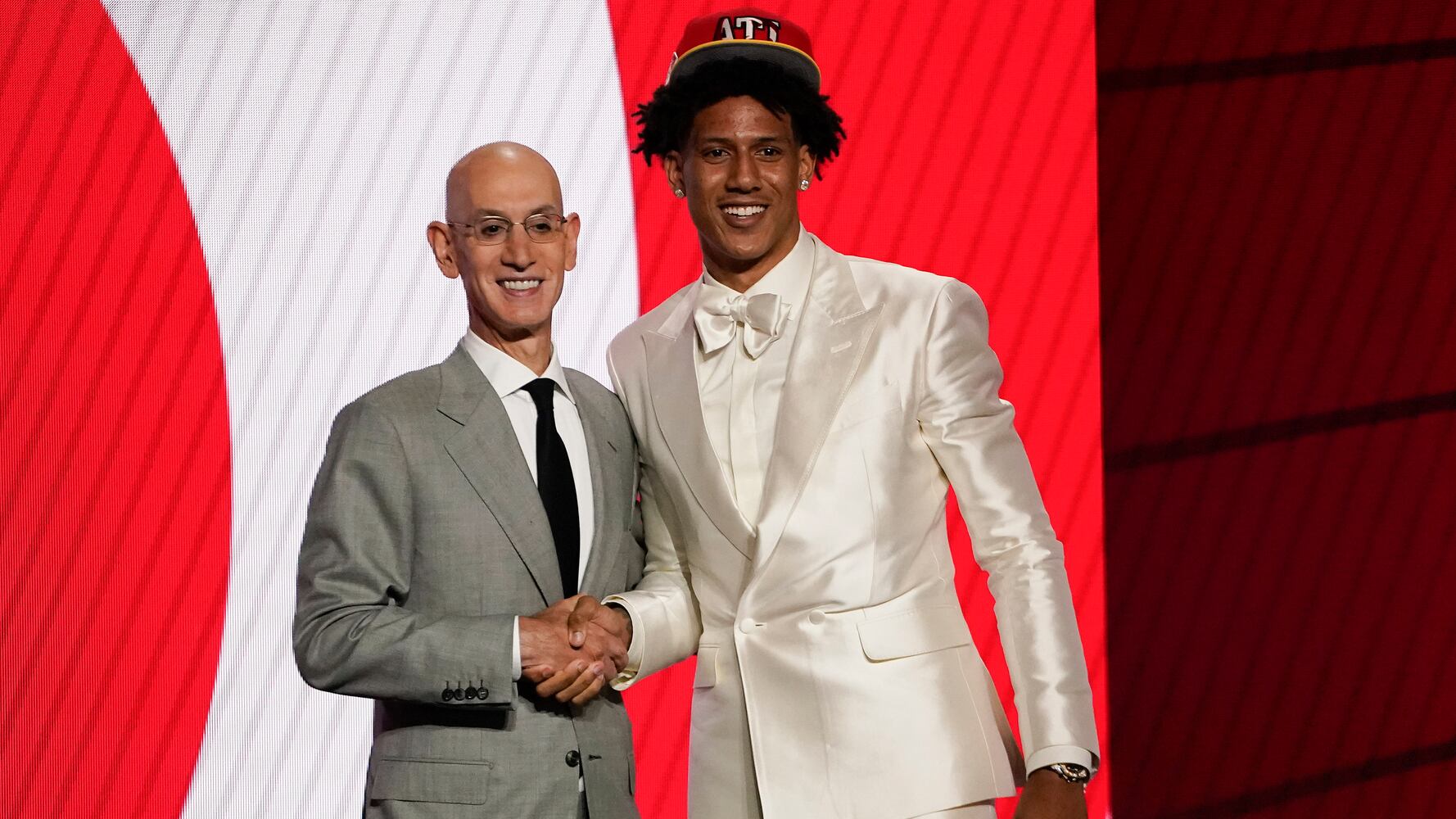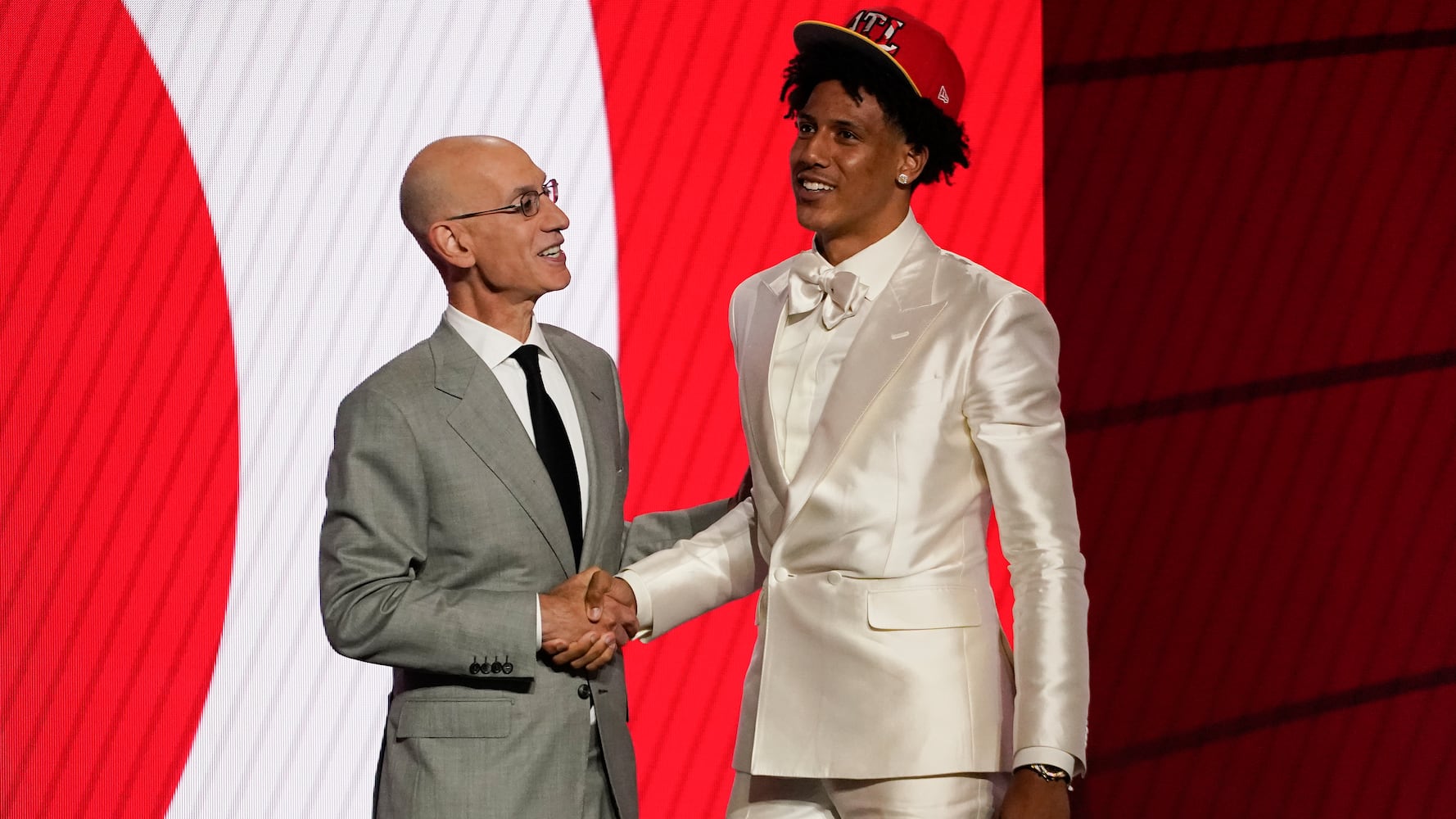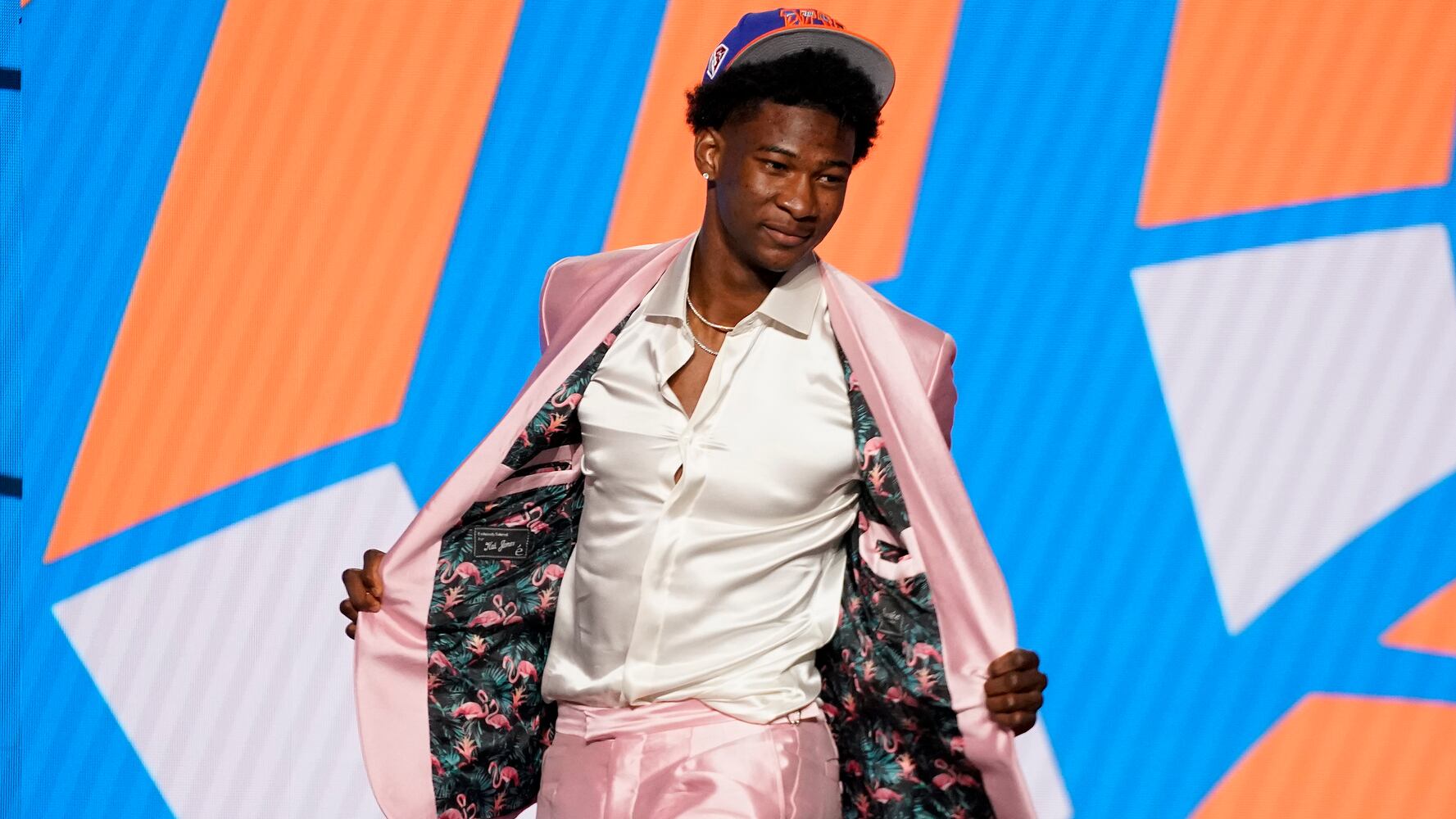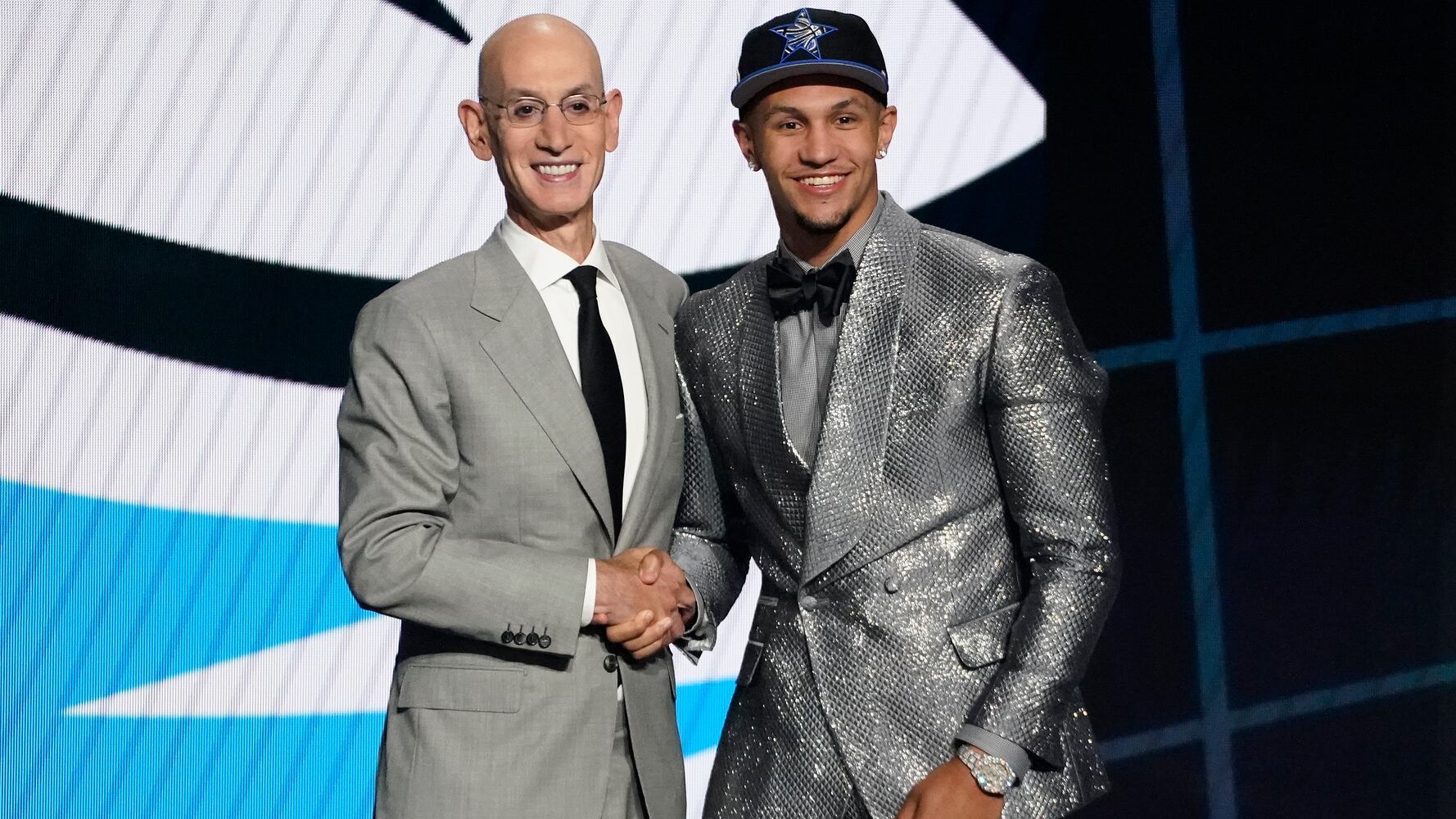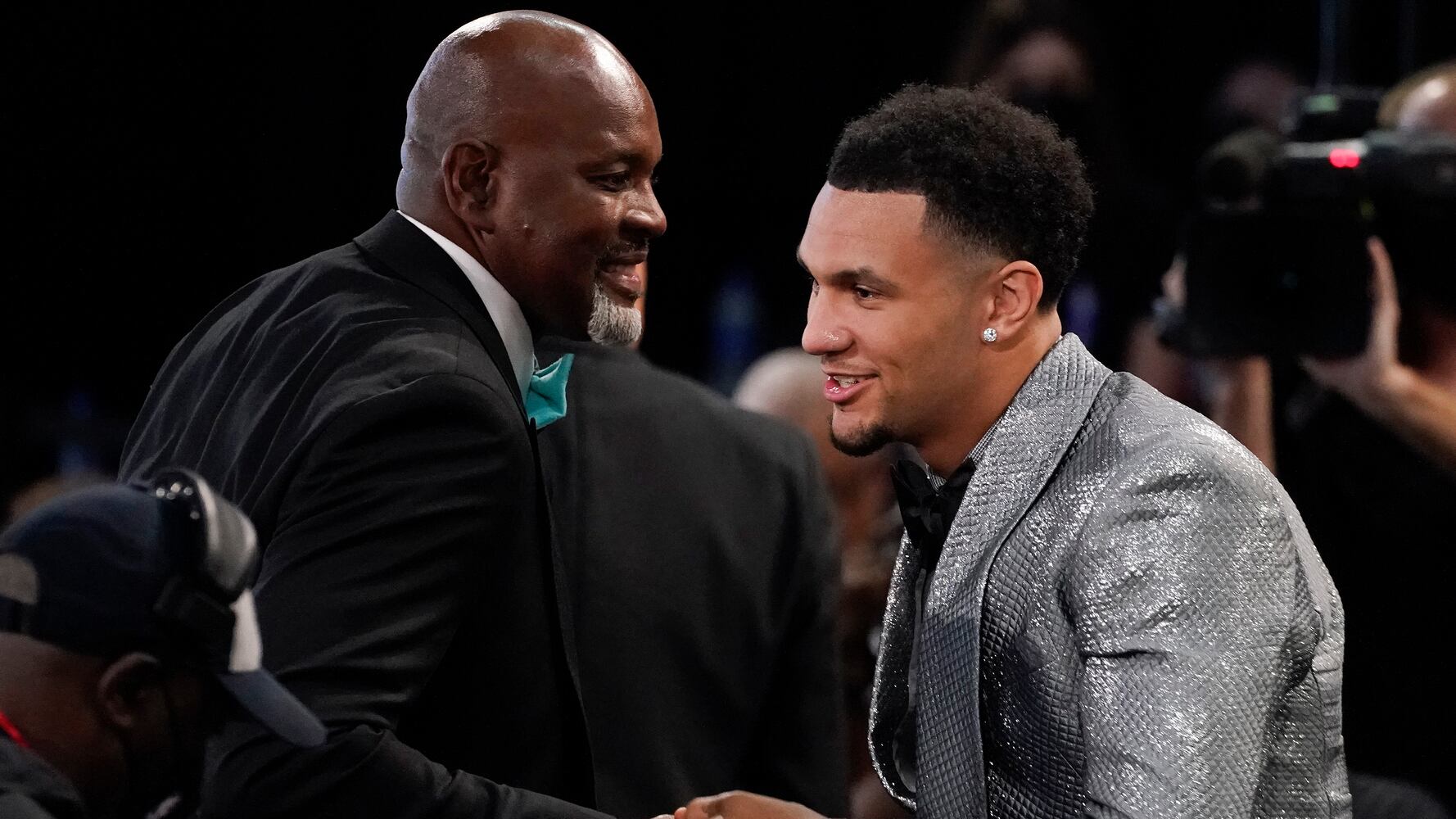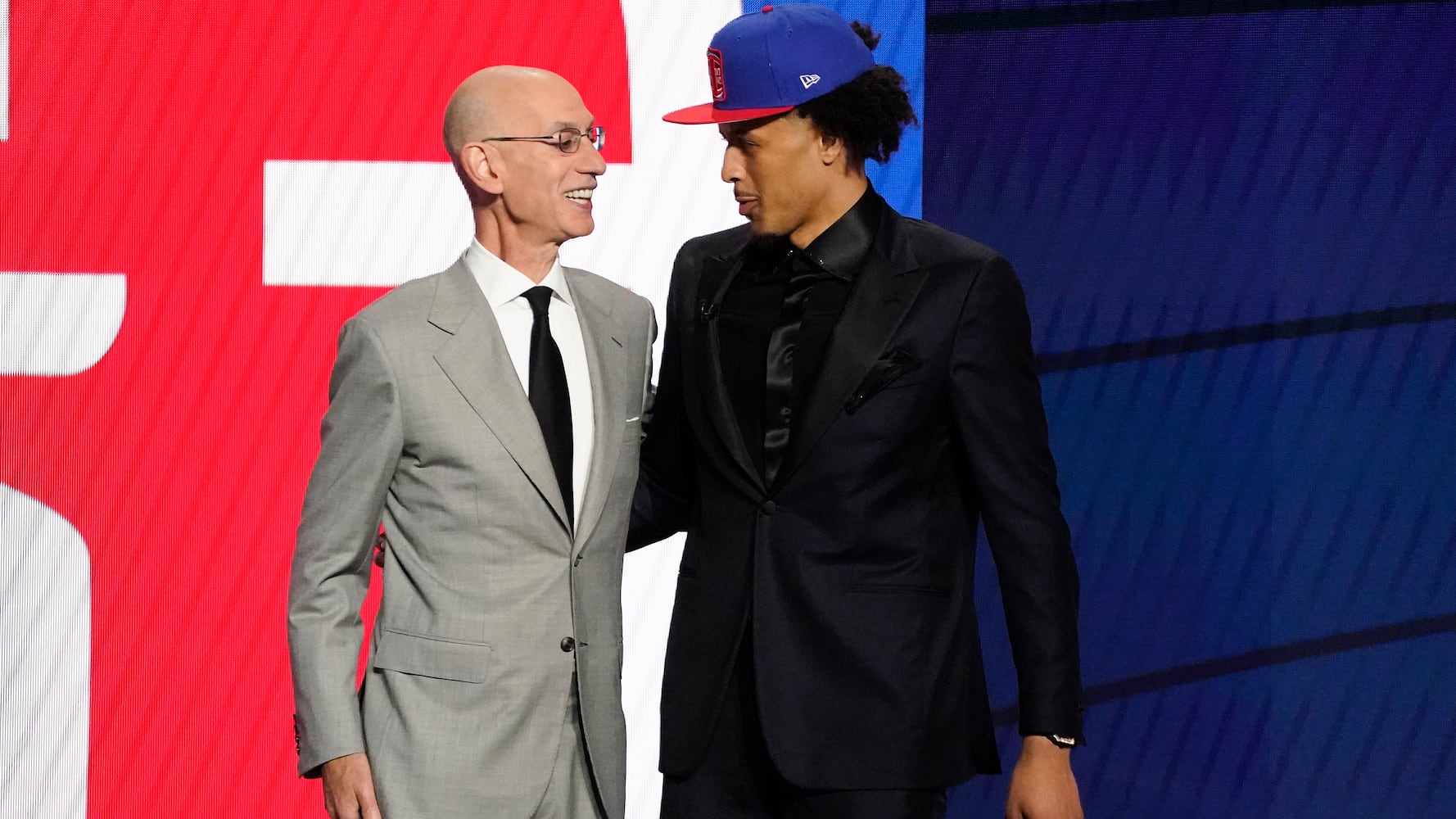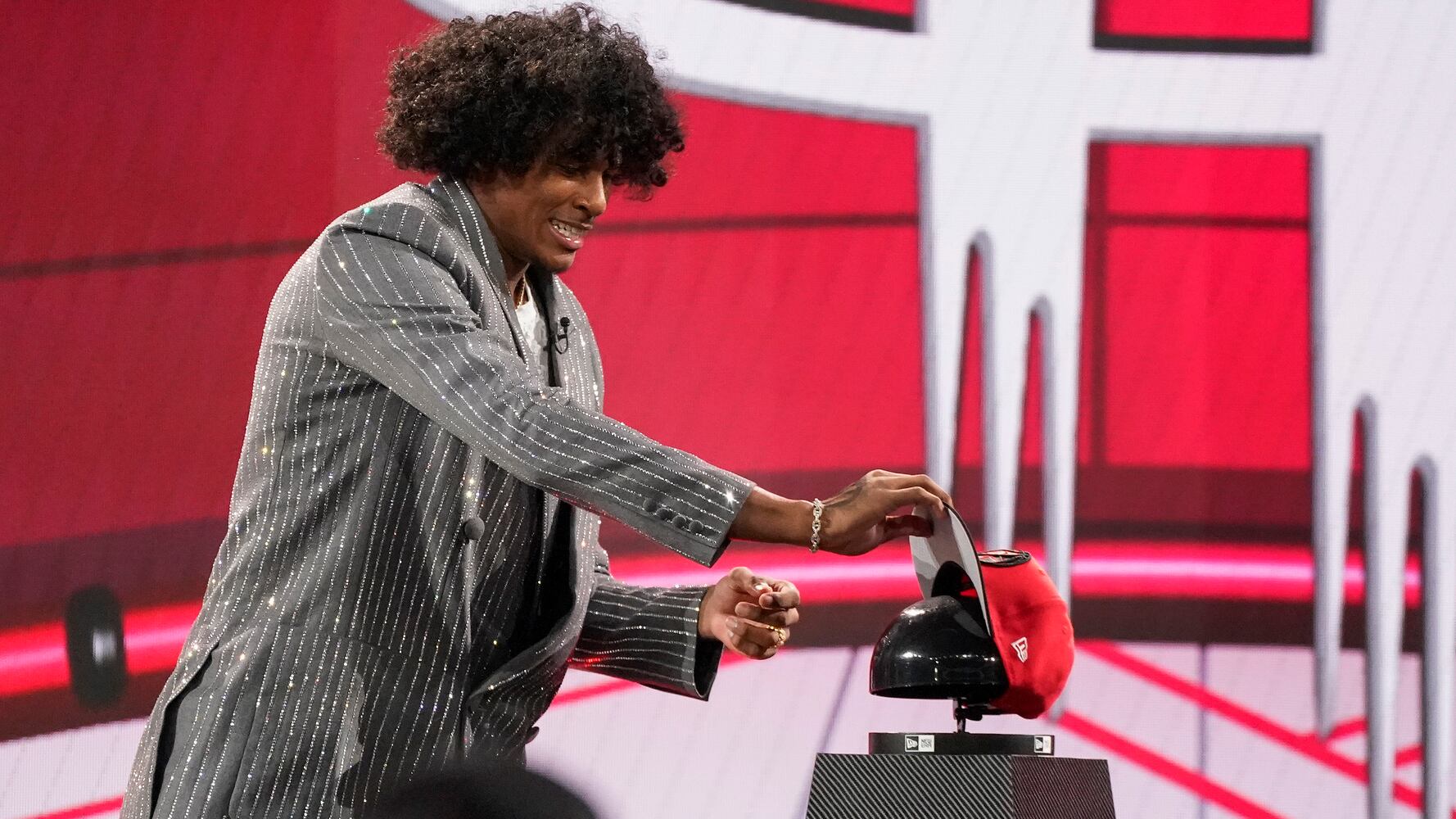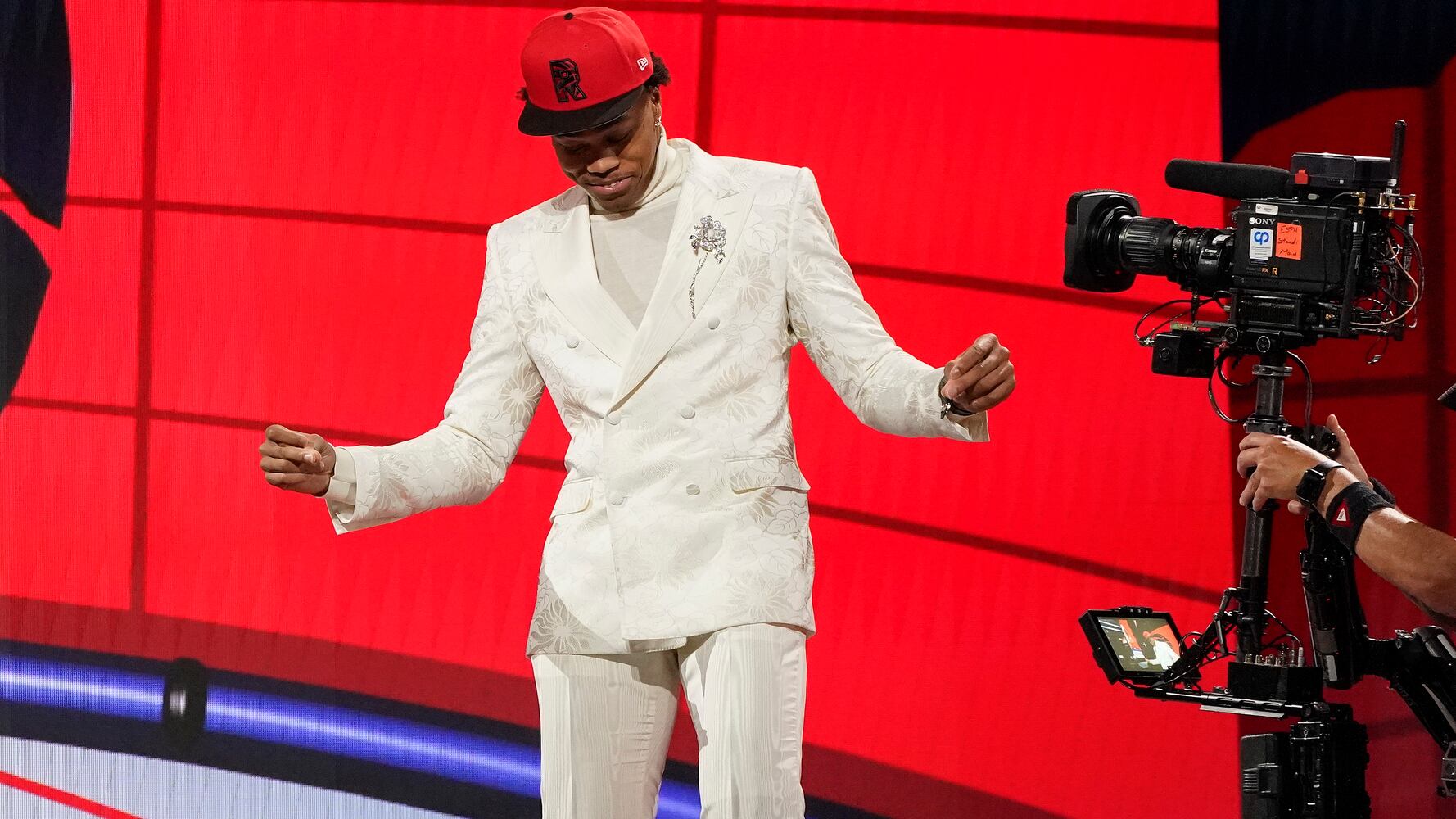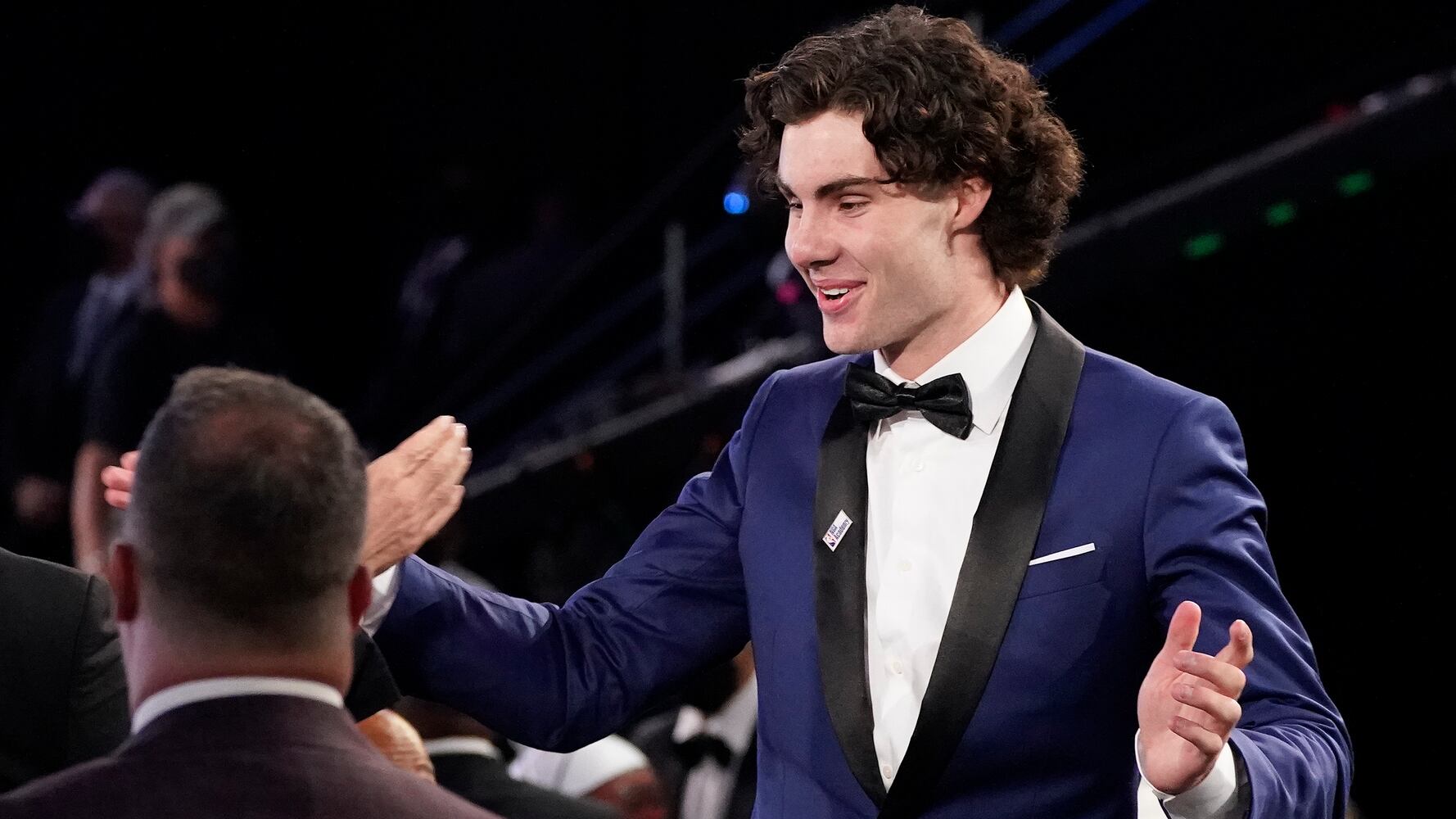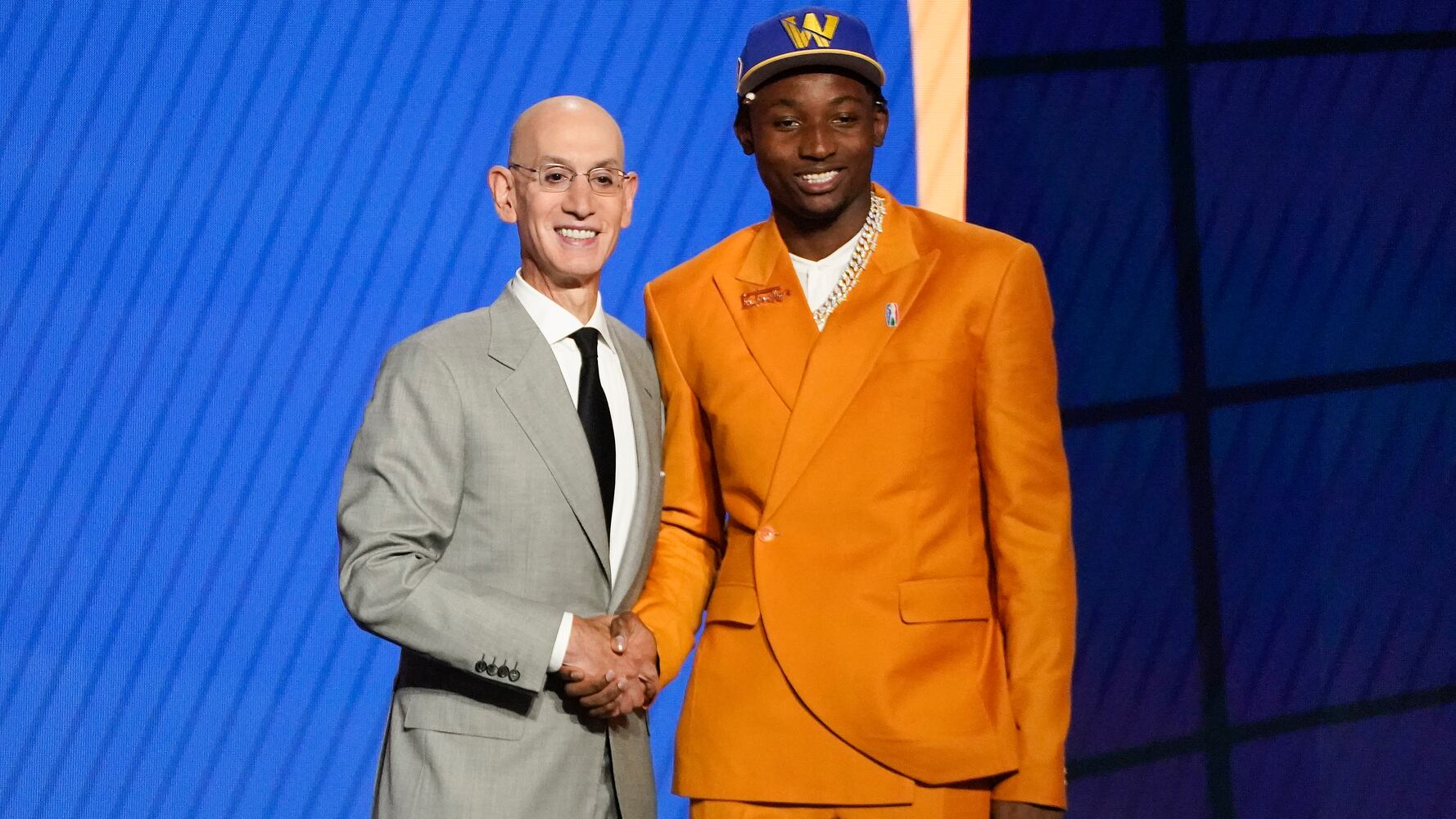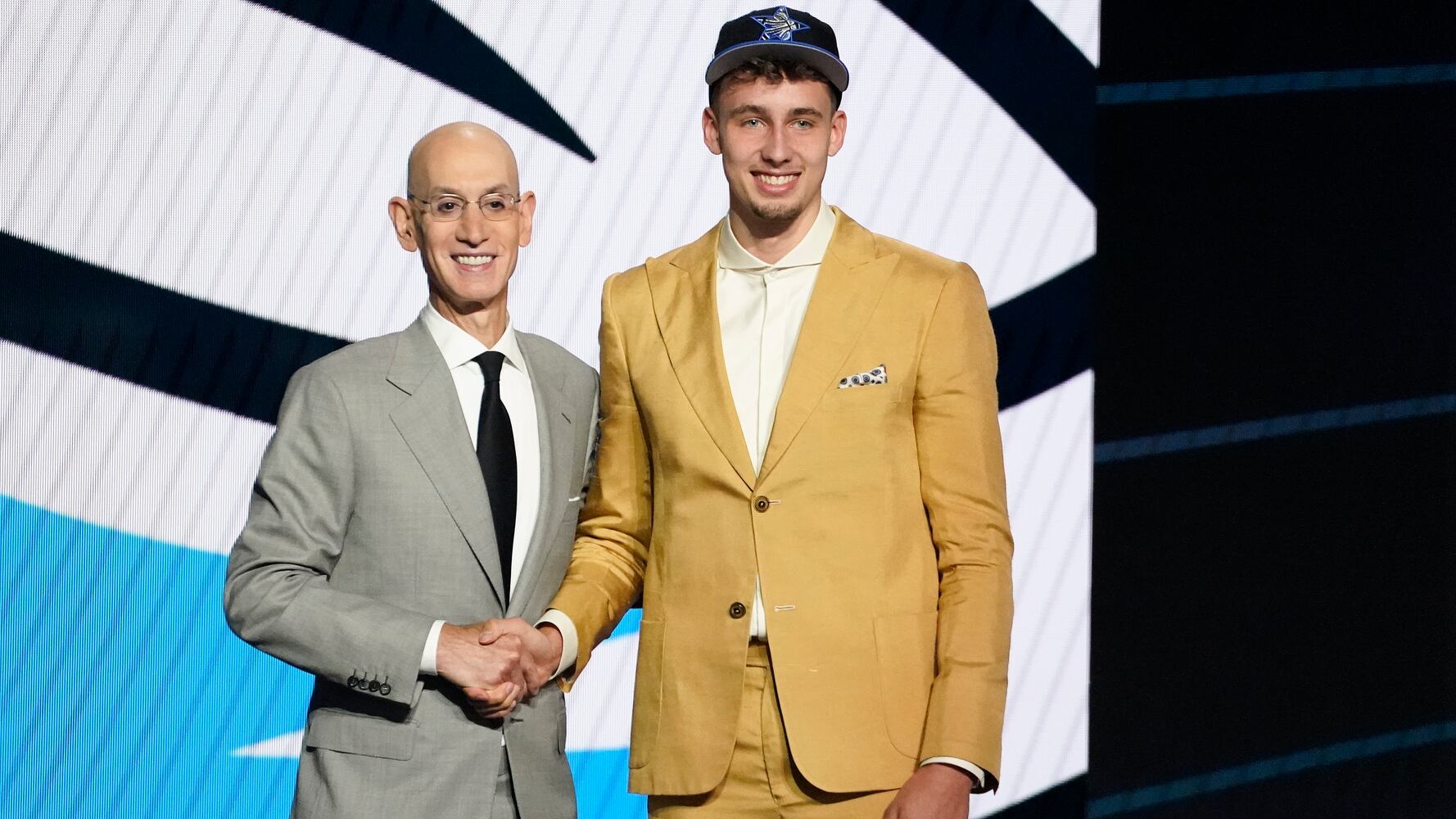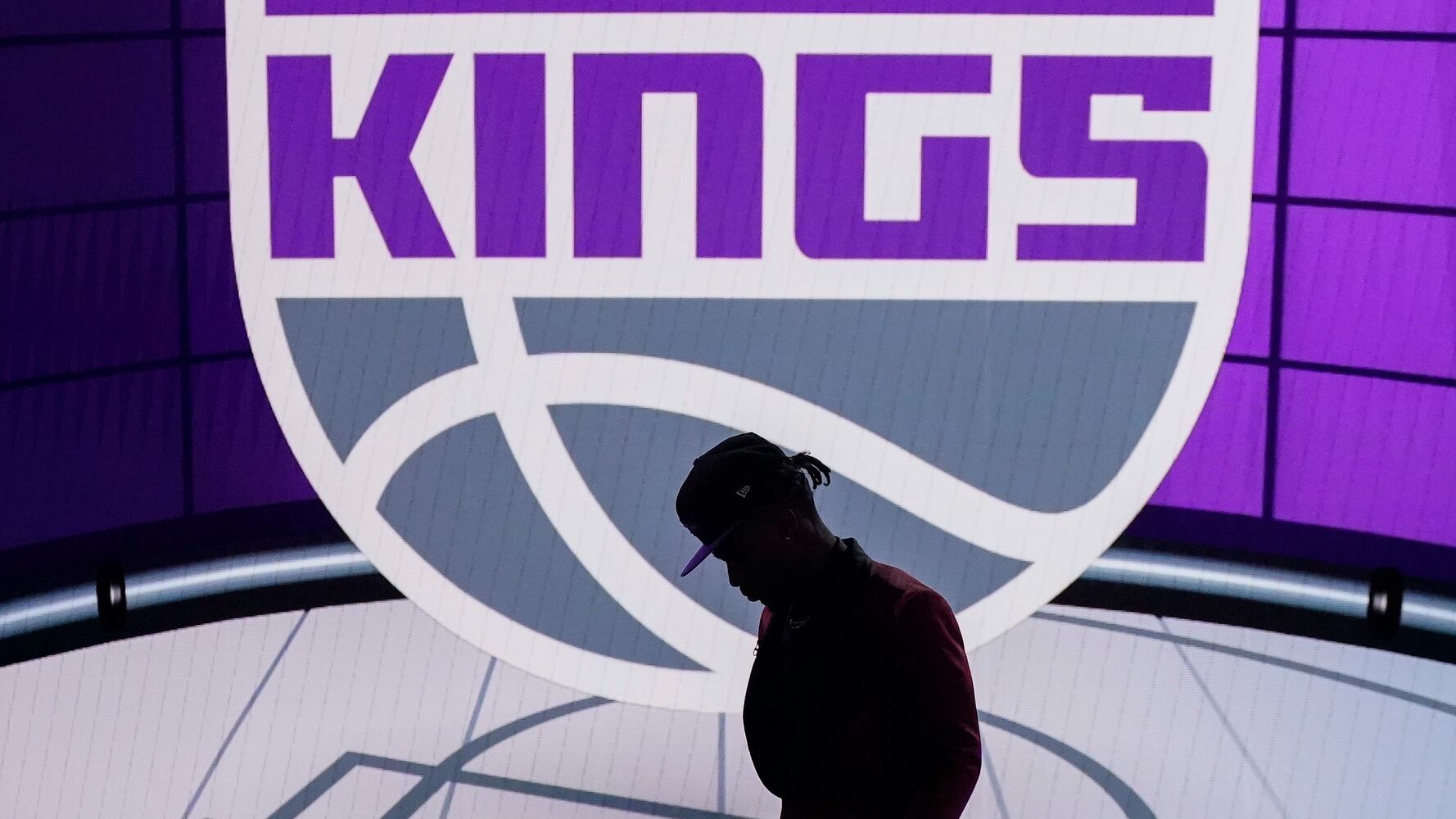Hawks general manager Travis Schlenk again took a chance on a Duke freshman whose stock fell in the draft. In 2019, it was Cam Reddish with the 10th overall pick; on Thursday night, it was Jalen Johnson at No. 20. Schlenk has made it clear that if other GMs pass on talented draft prospects with big questions, then he’s willing to take them.
With Johnson, Schlenk will try to go 3-for-3 picking players in that part of the draft order. John Collins and Kevin Huerter, both No. 19 picks, started for the Hawks during their run to the Eastern Conference finals. Collins and Huerter were college sophomores with more polish than Johnson, but he probably has more room to grow as a prospect.
Johnson, a native of Milwaukee, doesn’t turn 20 years old until December. Like Reddish, Johnson formerly ranked near the top of his class before scrutiny by scouts dropped him down the list. Johnson and Reddish both arrived in the NBA with a history of injuries.
But Johnson comes with some baggage that Reddish didn’t have. He played at three different high schools then left Duke in February after playing just 13 games. The latter decision rankled critics who believe college players should be loyal to programs that don’t pay them for their work.
The Hawks weren’t scared off by Johnson’s background. Schlenk said Hawks executives interviewed Johnson at the scouting combine last month and “felt good about everything” after he answered their questions.
“Obviously, (he) had some issues at Duke, and some stuff in high school as well,” Schlenk said. “But when you are picking at 20, and then that sort of talent (is there), you certainly feel good about it.”
Schlenk said the reports on Johnson’s foot injury are positive. The ailment may have limited Johnson’s effectiveness, but he still was very productive for Duke. He averaged 11.2 points, 6.1 rebounds, 2.2 assists and 1.2 blocks in just 21.4 minutes per game. Johnson shot 52% from the field and 63% on free throws.
Johnson has the potential to become the most versatile Hawks player on the roster. He’s 6-9 with a reported 7-foot wingspan and played a “point forward” role for Duke. Schlenk views Johnson as a “combo forward” who can play on the wing or inside. Johnson has the length and athleticism to guard all five positions, a coveted skill in a league where switching defensive schemes are the norm.
Credit: AP
Credit: AP
During a media interview in New York, Johnson described himself as a big, play-making guard. Huerter (6-7) and Reddish (6-8) are the current Hawks who come closest to fitting that mold. But neither Huerter nor Reddish have played often as big men in lineups. Johnson offers the promise of being a unique player for the Hawks.
Johnson had just 18 3-point attempts at Duke so he’s missing one part of Schlenk’s “dribble, pass, shoot” formula. But so was Collins when Schenk drafted him in 2017. Now Collins is a true “stretch” big man with a reliable 3-point shot. Developing a jumper is sure to be a central part of Johnson’s development plan with the Hawks.
It will take some time for Johnson to find his way in the NBA. That’s how it is for most rookies, especially those who join good teams with established veterans. Nearly every key Hawks veteran from 2020-21 is under contract for next season. Johnson projects to begin his rookie season low on the depth chart and probably will spend time in the G-League with the College Park Skyhawks.
Bogdan Bogdanovic, Huerter and Reddish are the incumbents at the wing positions. Collins will be the starting power forward if he doesn’t leave as a restricted free agent. Danilo Gallinari projects to be his top backup.
Looking ahead, if Johnson develops into a productive NBA player, he can be a cost-effective replacement for veteran players who depart. The benefit of having productive players on rookie contracts is their salaries are limited for up to five seasons. Johnson’s contract starts at about $2.1 million for next season and is guaranteed for three years with team options for the fourth and fifth years.
Collins could leave this summer if he signs an offer with another team and the Hawks don’t match. If Collins doesn’t sign a long-term deal, he can become an unrestricted free agent after next season. Huerter can do the same, and Gallinari’s contract isn’t fully guaranteed for 2022-23.
Schlenk said the Hawks considered trading up in the draft. They were rumored to be including Reddish in proposed deals. Schlenk ended up staying at No. 20 and making a risk/reward pick with Johnson. Schlenk made a similar move when he drafted Reddish.
If other GMs are shy about taking on talented prospects who’ve disappointed, then Schlenk will do it.
About the Author
